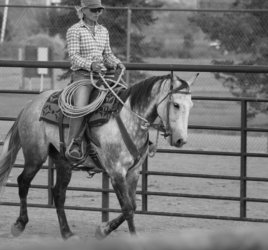The Motivation to Change
 “Make the right thing easy.”
“Make the right thing easy.”
A simple statement made to thousands of people over fifty years. A lifelong student of horse behaviour, Ray Hunt was looking for a way to help people better understand how to motivate a horse. He simply wanted the horse to end up with a better deal.
Ray Hunt believed that a horse had no concept of winning or losing so a bigger reward for a better performance held no meaning. He spent his life trying to convince people they could overcome their own functional fixedness, of making a horse do something, by understanding the power of their horse’s desire to perform, producing a more rewarding experience for both. Hunt’s goal, was to help people see the motivation for the horse must be intrinsic.
A student of motivating people, Daniel Pink, puts some compelling thoughts forward on intrinsic and extrinsic reward in his book Drive. Pink explores how the carrot and stick method, built into our behaviour from time out at age two, to grades in school, to how much we earn at work–no longer applies. He argues that extrinsic reward is an outdated notion from a time when mechanical tasks were more important than cognitive abilities. A functional fixedness the business environment suffers from, unable to see the problem of workplace motivation from a different perspective. A belief that behavioural scientists and horsemen like Hunt have known for years.
We use the carrot and stick metaphor in working with horses, it is also a tool we offer participants. The tool is stick with a string on the end. To some it immediately represents a whip. Depending on how it is wielded, it quickly becomes that to the horse and rarely produces better results. To others, it becomes an extension of their arm and they soon see how effective a support tool can be to communicate. A few choose to abandon the defined parameters and the narrow focus the tool sets up for them to see what they can achieve without it. When that happens these individuals have to reframe how they might define and communicate their expectations where the relationship with the horse becomes more important than their own success. This simple act puts into place a behaviour of intrinsic value versus extrinsic reward.
Paying attention to what motivates the horse allows participants the opportunity to see where their own perspectives or functional fixedness may be getting in their way of recognizing those who work with them. As the notion of reward is changing, how we build teams and produce results also must change – managing others no longer carries the same meaning it had in a production line environment, leading others to be successful does.
In summary, what Pink takes an entire book to express is exactly what Ray Hunt put in a single sentence. “Make the right thing easy.”



